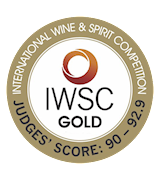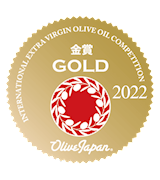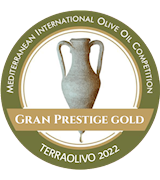Best European Condiment Types
Leskovački domaći ajvar is a traditional condiment, spread, or relish called ajvar, originating from the Leskovac area. The ajvar is produced exclusively from local red pepper varieties such as domaća kanija, kurtovska kapija, and palanačko čudo.
The peppers are roasted over an open flame and they are cleaned, minced, dried, and fried slowly and by hand. The flavor is pleasant and peppery as this ajvar shouldn't contain any parts of seeds nor the dark and charred parts of skin that comes off during the roasting process.
This prized relish is made in two varieties – mild and hot.
Produced since the Middle Ages and famous throughout the world, the traditional balsamic vinegar of Modena is made from a reduction of pressed and cooked Trebbiano and Lambrusco white grapes. The grape juice is boiled down to approximately 30% of the original volume, which produces a thick syrup called mosto cotto in Italian. Aceto Balsamico Tradizionale di Modena is then stored in wooden barrels and fermented with a slow aging process for a minimum of 12 years.
During this time, the traditional Modena vinegar becomes sweeter, viscous and very concentrated, which intensifies the flavor even more. Aceto balsamico is rich, glossy, deep brown in color and has a complex flavor that balances the natural sweet and sour elements of the cooked grapes with hints of wood from the barrels: chestnut, cherry, oak, mulberry, ash or juniper.
THE BEST Aceto Balsamico Tradizionale di Modena Balsamic Vinegars

Acetaia Leonardi
Balsamico Tradizionale di Modena D.O.P. – Extravecchio
Superior Taste Awards - 3 stars 2025, 2024
Widely used and commonly found on restaurant tables across Europe, Aceto Balsamico di Modena is produced in the neighboring provinces of Modena and Reggio Emilia. Aceto di Modena is an inexpensive, less aged variety of Aceto Balsamico Tradizionale di Modena.
It usually sells for approximately $10-20 an ounce, and should never be mistaken for the highly prized Tradizionale that can sell for up to $200 an ounce. Traditionally, balsamic vinegar is made from late harvested, locally grown Trebbiano grapes.
THE BEST Aceto Balsamico di Modena Balsamic Vinegars

Acetaia La Vecchia Dispensa
Black Pearl Balsamic Vinegar of Modena IGP
Great Taste Awards - 2 stars 2024
Also known as ABB mustard, this is a specialty from Düsseldorf that has been produced since the early 18th century. The name 'ABB' derives from the initials of company founder Adam Bernhard Bergrath, who also invented the mustard.
This malty brown mustard is made with brown and yellow mustard seeds and mixed with unfiltered Düsseldorf spirit vinegar. The method of production has remained virtually unchanged since 1726, and a 500kg granite millstone is still used to grind the seeds.
In 1884, while he was living in the town of Nuenen, Dutch painter Vincent van Gogh included a gray mustard pot bearing the initials ABB and the anchor symbol into his painting 'Stilleven met flessen en aardewerk' (Still life with bottles and ceramic).
This traditional peppers-and-eggplant relish is one of the most popular condiments all over the Balkans and Eastern Europe. The most prized type of ajvar is often the Macedonian one, made only with red peppers. Though its origins are often disputed, the name ajvar is said to stem from the Turkish word havyar, meaning caviar.
In the past, Serbia was especially known for its production of caviar from farmed Black Sea beluga (sturgeon), and was one of the major world exporters. Later on, after facing a fall in production of real caviar, the Serbians instead supposedly started offering the so-called "red ajvar" or vegetable caviar—hence the name.
Sel de Guérande and Fleur de sel de Guérande are types of sea salt from the salt marshes of the Guérande peninsula in France. The salt is hand harvested and additive-free, consisting of sodium chloride crystals. Sel de Guérande is gray in colour due to the natural clay base of the salt pan and can be packaged as is, or dried and ground into different granules.
Fleur de sel de Guérande is white as it does not touch the base of the salt pan, but floats on the surface until it is delicately scraped off. Its taste is delicate and sea-salty, reminiscent of the ocean, like the taste when you lick your lips after a day on the beach.
Maldon sea salt is a traditional hand-harvested sea salt originating from Maldon. The salt has been harvested since 1882 and it’s characterized by the unique pyramid-like flakes. The brine is first evaporated over fires that are mounted on brick openings.
The pyramid-shaped crystals and flakes stop the salt from forming lumps. Maldon sea salt is typically used as a finishing salt – sprinkle it over grilled meat, butter, or vegetables just before serving for the best results. Its low content of magnesium doesn’t give the salt a bitter aftertaste, as many other salts do.
Tavira sea salt has unique chemical properties differing from those of common salt. It is an unrefined, additive-free artisanal sea salt, which lends a unique taste to the dishes it is used in. This flower of salt is produced using traditional methods and is harvested by hand every two weeks from July to September in the Ria Formosa Natural Park in the southern Portuguese municipality of Faro.
Only the water of the Atlantic Ocean, which is rich in salt and minerals, and natural wind and solar energy are used to produce the salt. This salt serves best when used to preserve foods such as meat, fish, and vegetables, or to make bread, butter, and cheese.
Moutarde de Dijon is a traditional mustard characterized by its pale yellow color and a creamy texture. It is usually made from ground brown or black mustard seeds, salt, and various spices. Although it could only be produced in the Dijon region of France in the past, today the term Dijon mustard has become so popular that any mustard using the traditional Dijon recipe can be named Dijon mustard.
The original recipe was created by Jean Naigeon, a mustard producer who first started to use vinegar instead of the juice of unripe grapes (verjus) in its production. It is often used as a unique accompaniment to numerous chicken, beef, and salmon dishes, as well as being a flavorful dressing for hamburgers, hot dogs, and salads.
A jar of lutenica or lyutenitsa is one of the essential food items in almost every Bulgarian and North Macedonian household. This famous relish, which lies somewhere between a spread and a chutney, is, at its basic, made with red bull horn peppers, tomatoes, salt, sugar, pepper, and oil.
Cumin is also often added. Variations do exist, and you will often find recipes that include eggplant, carrots, garlic, and even parsley and hot peppers. Lyutenitsa is traditionally consumed as a spread, accompanied by bread, crackers, or toast. It is also commonly served on the side with meat dishes, especially grilled meat and meatballs.
Best European Condiment Producers
AWARDS

Great Taste Awards - 3 stars
2024, 2023, 2022, 2021

Great Taste Awards - 2 stars
2024, 2023, 2022, 2021
BEST Pepper Field Herbs and Spices
Mr Vikki's is an award-winning producer of artisan hot sauces. The company specializes in creating small-batch, hand-crafted condiments using fresh, natural ingredients. Their product line includes a variety of chutneys, pickles, and sauces. Mr Vikki's is known for its unique flavor combinations that blend heat with a range of spices.
They have garnered multiple awards for their products at various food competitions.
AWARDS

Great Taste Awards - 3 stars
2024, 2023, 2022, 2021

Great Taste Awards - 2 stars
2024, 2023, 2022
BEST Mr Vikki's Condiments
Valdespino is one of the oldest and most prestigious wineries in the Jerez de la Frontera region of Spain, with a sherry-making tradition dating back to the 13th century. The winery is unique for producing wines from the renowned Pago de Macharnudo Alto vineyard, the most important "cru" in Jerez and one of the most esteemed in the world.
Valdespino is known for its commitment to traditional production methods, including fermentation in oak barrels and long aging processes, resulting in sherry wines of exceptional complexity and character. Their collection includes various styles of sherry, such as Fino, Manzanilla, Amontillado, Oloroso, and Palo Cortado, each with its own distinctive characteristics.
AWARDS

IWSC- International wine & spirit competition - Gold
2024, 2023, 2022

Great Taste Awards - 3 stars
2023

Decanter World Wine Awards - Platinum
2022, 2020
BEST Valdespino Wines
AWARDS

Great Taste Awards - 3 stars
2024, 2023, 2021
BEST Fino Condiments
Burma Star Foods Ltd is a company based in England that specializes in producing spice blends and seasonings. The company focuses on creating authentic Burmese flavors and provides a variety of products aimed at replicating traditional Burmese cuisine.
They source high-quality ingredients to ensure their spice mixtures maintain authenticity and flavor integrity.
AWARDS

Great Taste Awards - 2 stars
2022

Great Taste Awards - 3 stars
2022
AWARDS

Academy of Chocolate - Bronze
2023

Great Taste Awards - 3 stars
2021
BEST Opg Matulić Chocolates
AWARDS

Great Taste Awards - 2 stars
2024

Great Taste Awards - 3 stars
2021
BEST Crawford's Rock Seaweed Company Condiments
Falksalt is one of the leading producers of premium salt, headquartered in Sweden, with nearly 100 years of experience in artisanal production and distribution of high-quality salts worldwide. Founded in 1928, the brand has specialized over the years in natural and hand-harvested sea salt, known for its delicate structure and pure taste, making it a staple in professional gastronomy as well as in households that appreciate top-quality ingredients.
Falksalt is best known for its flake sea salt, which is produced using traditional evaporation methods in controlled conditions, preserving its natural mineral content and distinctive texture.
AWARDS

Olive Japan - Gold
2022, 2013

London IOOC - Gold
2022, 2021

Terraolivo IOOC - Grand Prestige Gold
2022
BEST Jordan Olivenoel Olive Oils
Best European Condiments
AWARDS

Great Taste Awards - 3 stars
2024, 2023
White Balsamic (Blanco) made by Fino is a premium vinegar that captures the rich essence of traditional balsamic but with a lighter, more nuanced profile. This unique condiment is created by cooking the Trebbiano grapes at a lower temperature to ensure the vinegar retains a bright, clear color, and delicate flavor.
It's perfect for enhancing salads, seafood, and even fruits, offering a subtly tangy sweetness without overpowering the original taste of the dish. White Balsamic by Fino is cherished by chefs and home cooks alike for its versatility and refined flavor profile.
AWARDS

Great Taste Awards - 3 stars
2024, 2021
Sour Cherry Molasses made by Belazu Ingredient Company is a unique product that combines the tartness of sour cherries with the depth and richness of molasses. This product is carefully crafted to enhance various dishes with its vibrant flavor and deep, reddish color.
It is often used as a versatile ingredient in the kitchen, suitable for drizzling over desserts, stirring into yogurt, or even incorporating into savory dishes such as glazes for meats or dressings for salads. Its unique taste profile is a fine balance between sweet and tart, making it a distinctive addition to any culinary creation.
AWARDS

Great Taste Awards - 3 stars
2023
Valdespino Sherry Vinegar with PX made by Brindisa Ltd is a high-quality vinegar produced from aged sherry wines. This vinegar is notable for its rich, complex flavors, which are enhanced by the addition of Pedro Ximénez (PX), a sweet, dark sherry.
It is both sweet and acidic, making it a versatile ingredient in various culinary applications, such as salad dressings, marinades, and drizzling over roasted vegetables or meats. This vinegar is made using traditional methods that involve aging in wooden barrels, which adds depth and character to its taste.
AWARDS

Great Taste Awards - 3 stars
2023
AWARDS

Great Taste Awards - 3 stars
2022
Clearspring Organic Japanese Barley Miso Paste - Unpasteurised is a traditional Japanese seasoning made by Clearspring Ltd. This product incorporates organic barley and soybeans, which are fermented to develop a rich, savory flavor profile. The miso paste is unpasteurised, ensuring that it retains live cultures, which contribute to its probiotic properties.
Traditionally used in miso soup, it can also be incorporated into a variety of dishes to add depth and umami flavor. The product is certified organic and adheres to high standards of quality and authenticity in its production process.
AWARDS

Great Taste Awards - 3 stars
2023
AWARDS

Great Taste Awards - 3 stars
2023
Fino's Dark Balsamic (Crema) is renowned for its rich and robust flavor profile. This product is made from carefully selected grapes and aged to perfection to develop a deep, complex taste. Its smooth, velvety texture makes it a versatile addition to both sweet and savory dishes.
This crema is particularly appreciated for its balanced acidity and sweetness, adding a sophisticated touch to salads, marinades, and desserts.
AWARDS

Great Taste Awards - 3 stars
2023
AWARDS

Great Taste Awards - 3 stars
2022
AWARDS

Great Taste Awards - 3 stars
2023










TasteAtlas food rankings are based on the ratings of the TasteAtlas audience, with a series of mechanisms that recognize real users and that ignore bot, nationalist or local patriotic ratings, and give additional value to the ratings of users that the system recognizes as knowledgeable. For the “Top 100 European Condiments” list until April 23, 2025, 2,953 ratings were recorded, of which 2,180 were recognized by the system as legitimate. TasteAtlas Rankings should not be seen as the final global conclusion about food. Their purpose is to promote excellent local foods, instill pride in traditional dishes, and arouse curiosity about dishes you haven’t tried.



















































































































































































